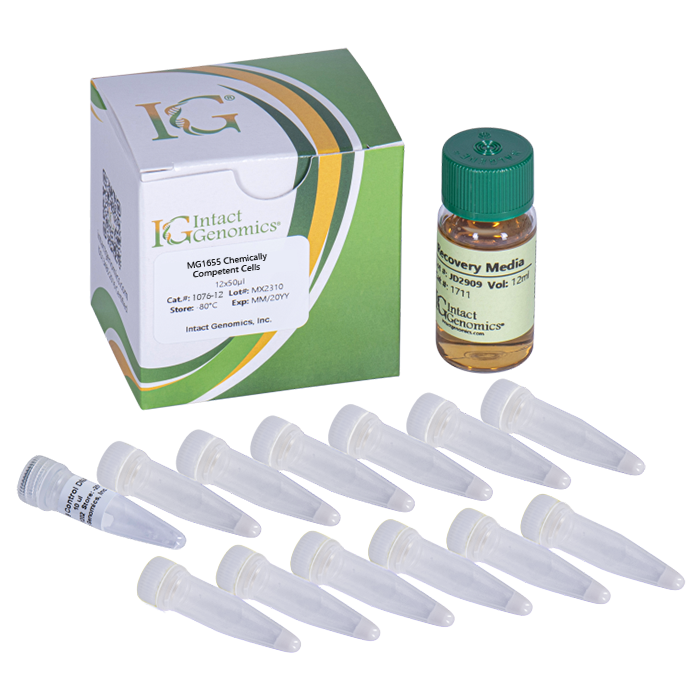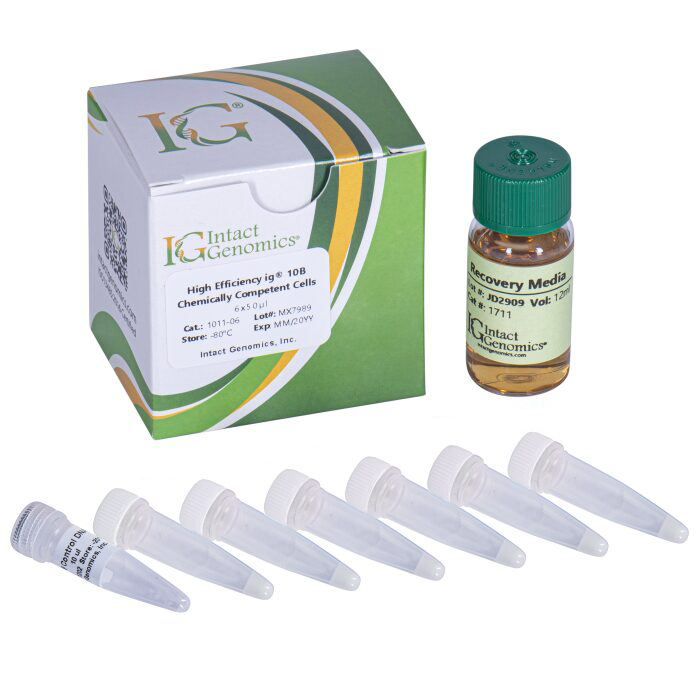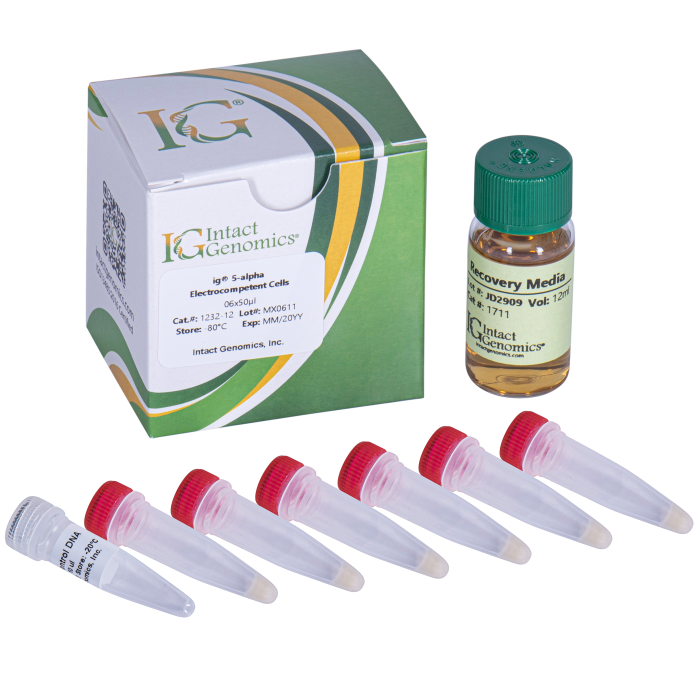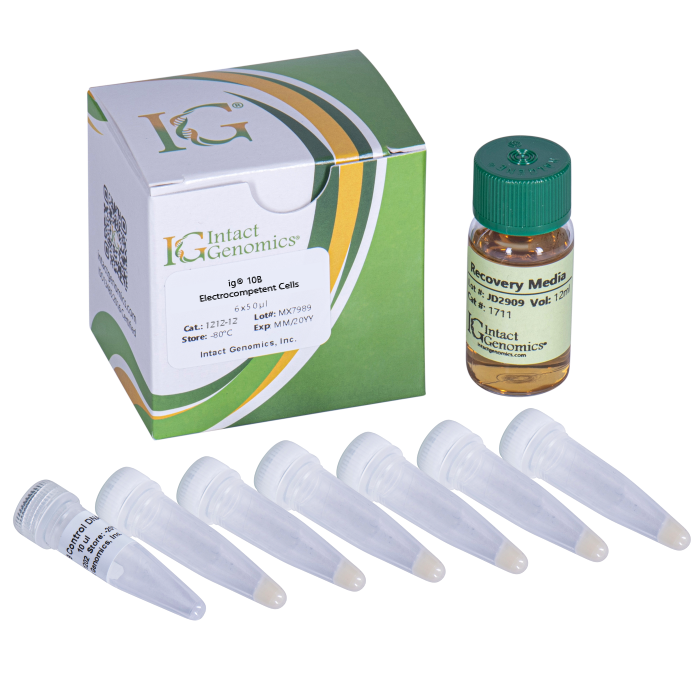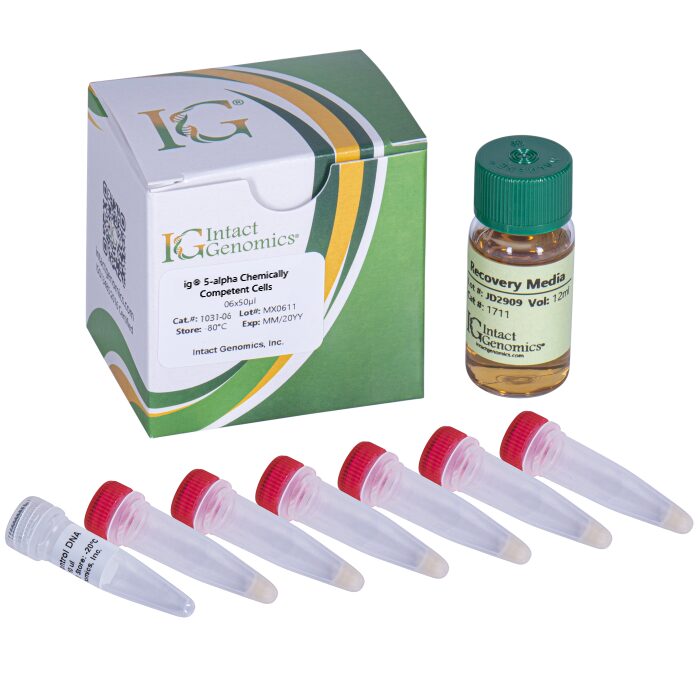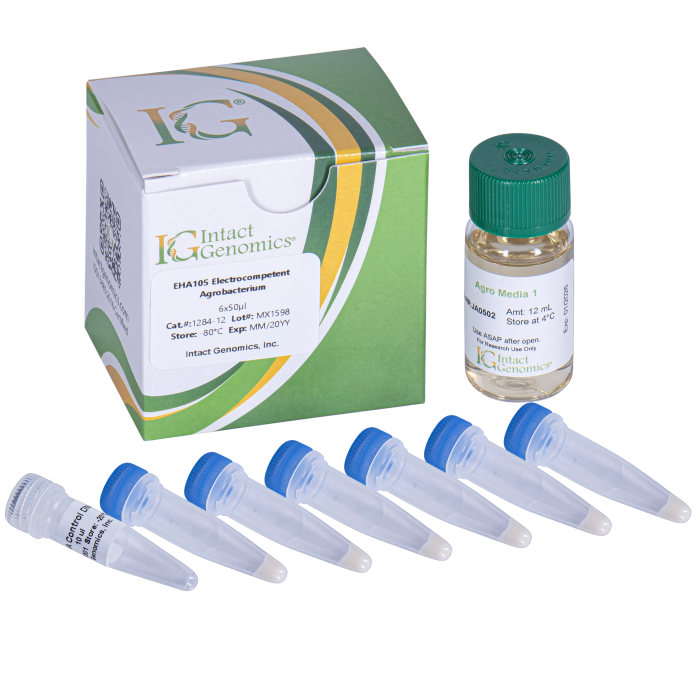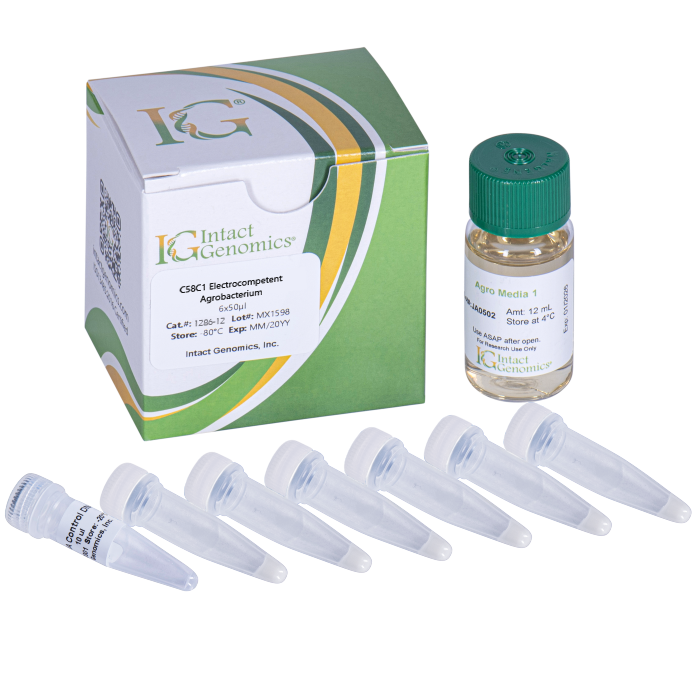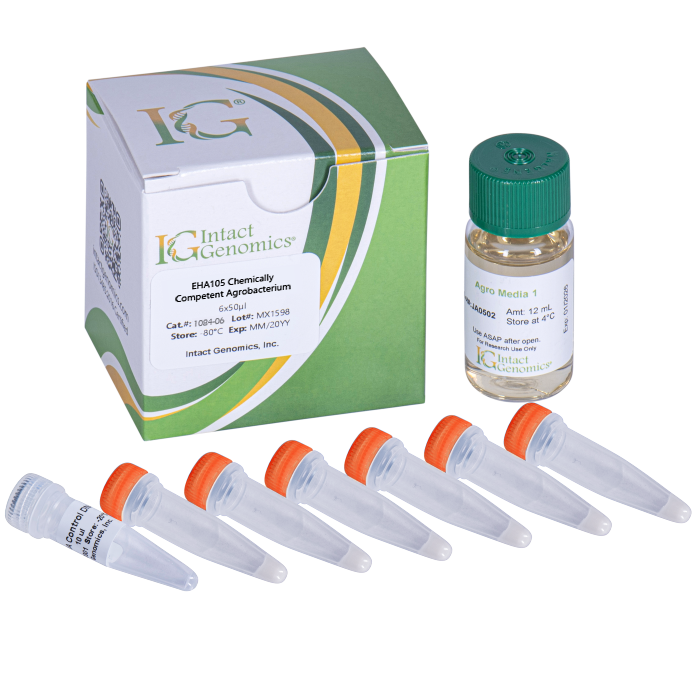MG1655 Chemically Competent Cells are made from the “wild type” K-12 strain with minimal genetic manipulation.
MG1655 Chemically Competent Cells
Price range: $195.00 through $395.00
Description
Intact Genomics (ig®) MG1655 Chemically Competent Cells are suitable for routine DNA transformation and other research purposes. MG1655 is the “wild type” K-12 strain with minimal genetic manipulation having only been cured of the temperate bacteriophage lambda and F plasmid by ultraviolet light and acridine orange (1).
Specifications
Competent cell type: Chemically Competent
Derivative of: MG1655
Species: E. coli
Format: Tubes
Transformation efficiency: ≥5 x 106 cfu/µg pUC19 DNA
Blue/white screening: No
Shipping condition: Dry ice
Reagents Needed for One Reaction
ig® MG1655 chemically competent cells: 50 µl
DNA (or pUC19 Control, 10 pg/µl): 1 µl
Recovery medium: 1 ml
Storage
ig® MG1655 competent cells: -80 ºC
pUC19 control DNA: -20 ºC
Recovery medium: 4 ºC
Genotype
F- lambda– ilvG- rfb-50 rph-1
Genomic Features
ig® MG1655 chemically competent cells have the following genomic features:
- Cured of the temperate bacteriophage lambda and F plasmid
- A frameshift at the end of rph
- ilvG- mutation is a frameshift that knocks out acetohydroxy acid synthase II
- rfb-50 mutation is an IS5 insertion that results in the absence of O-antigen synthesis
Quality Control
Transformation efficiency is tested by using the pUC19 control DNA supplied with the kit and using the high efficiency transformation protocol. Transformation efficiency should be greater than 5×106 CFU/µg pUC19 DNA. Untransformed cells are tested for appropriate antibiotic sensitivity.
General Guidelines
Follow these guidelines when using MG1655 chemically competent E. coli:
- Handle competent cells gently as they are highly sensitive to changes in temperature or mechanical lysis caused by pipetting.
- Thaw competent cells on ice and transform cells immediately following thawing. After adding DNA, mix by tapping the tube gently. Do not mix cells by pipetting or vortexing.
Technical Support
Intact Genomics is committed to supporting the worldwide scientific research community by supplying the highest quality reagents. Each new lot of our products is tested to ensure they meet the quality standards and specifications designated for the product. Please follow the instructions carefully and contact us if additional assistance is needed. We appreciate your business and your feedback regarding the performance of our products in your applications.
1076-12 1076-48
Additional information
| µl | 6×50µl, 12×50µl, 24×50µl, 6×100µl, 12×100µl, 24×100µl, 6×200µl, 12×200µl, 1×96 well plate (20µl/well) |
|---|
High Efficiency Transformation Protocol
Use this procedure to transform MG1655 chemically competent cells. We recommend verifying the transformation efficiency of the cells using the pUC19 control DNA supplied with the kit. Do not use these cells for electroporation.
- Remove competent cells from the -80 °C freezer and thaw completely on wet ice (10-15 minutes).
- Aliquot 1-5 µl (1 pg-100 ng) of DNA to the chilled microcentrifuge tubes on ice.
- When the cells are thawed, add 50 μl of cells to each DNA tube on ice and mix gently by tapping 4-5 times. For the pUC19 control, add 1 µl of (10 pg/µl) DNA to a chilled microcentrifuge tube, prior to adding 50 µl of Mix well by tapping. Do not pipette up and down or vortex to mix, this can harm cells and decrease transformation efficiency.
- Incubate the cells with DNA on ice for 30 minutes.
- After 30-minute ice incubation, heat shock the cells at 42 °C for 45 seconds.
- Transfer the tubes to ice for 2 minutes.
- Add 950 µl of Recovery Medium or any other medium of choice to each tube.
- Incubate tubes at 37 °C for 1 hour at 210 rpm.
- Spread 50 μl to 200 μl from each transformation on pre-warmed selection plates. We recommend plating two different volumes to ensure that at least one plate will have well-spaced colonies. For the pUC19 control, plate 50 μl on an LB plate containing 100 μg/ml ampicillin. Use sterilized spreader or autoclaved ColiRoller™ plating beads to spread evenly.
- Incubate the plates overnight at 37 °C.
5 Minute Transformation Protocol
The following procedure results in only ~10% of the transformation efficiency as the protocol listed above.
- Remove competent cells from the -80 °C freezer and thaw in your hand.
- Aliquot 1-5 µl (1 pg-100 ng) of DNA to the microcentrifuge tubes. Do not pipette up and down or vortex to mix, this can harm cells and decrease transformation efficiency.
- Incubate the cells with DNA on ice for 2 minutes.
- After 2-minute ice incubation, heat shock the cells at 42 °C for 45 seconds.
- Transfer the tubes to ice for 2 minutes.
- Add 950 µl of Recovery Medium at room temperature or any other medium of choice to each tube. Immediately spread 50 μl to 200 μl from each transformation on pre-warmed selection plates. We recommend plating two different volumes to ensure that at least one plate will have well-spaced colonies. For the pUC19 control, plate 50 μl on an LB plate containing 100 μg/ml ampicillin. Use sterilized spreader or autoclaved ColiRoller™ plating beads to spread evenly.
- Incubate the plates overnight at 37 °C.

